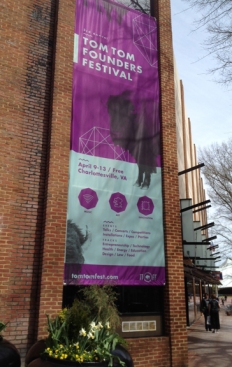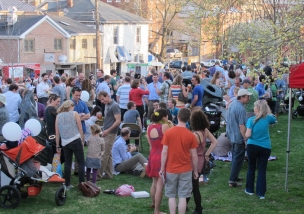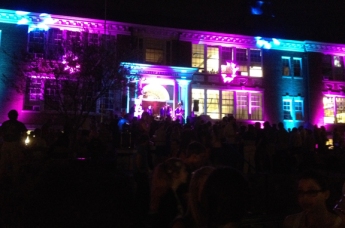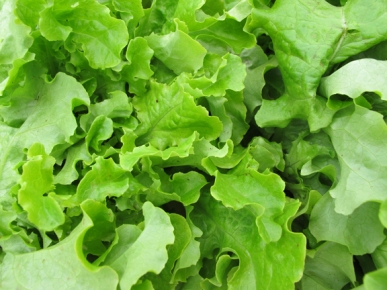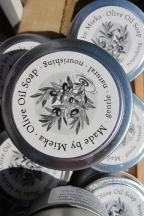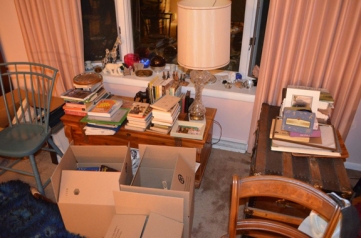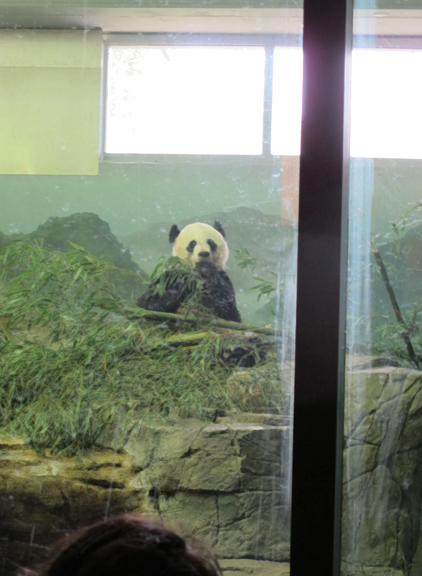Paddle Pals

Traveling with … my Sea Eagle.
I had a successful run with my rationale this weekend.
I recently purchased an inflatable kayak, a Sea Eagle Sport Kayak SE-330, despite lots of advice that I wouldn’t like it. My contrary and insistent thoughts ran along the lines of that at 26 pounds, it would travel so easily in the back of my car so that I could impulsively set off on a pretty morning all by myself. No worrying about anyone else’s schedule. Light enough to hoist, heft and launch all by my lonesome.
Sunday became that pretty day. Labor Day weekend. Nearly cloudless skies. Cool in the morning, but warm enough to get wet. It was time to test my theory.
With traveling friends in Paris, DC, Portland, Scandinavia, and just plain out of town, I could gauge if I liked being on the water by myself.
Just under ten miles from my home is a county park with a smallish dam and correspondingly smallish lake. The real bonus to Walnut Creek was a barely sloping, grassy bank right up to the water’s edge. I was parked and paddling less than an hour after leaving the driveway. With an old iPhone in a water-resistant pouch slung around my neck as a camera, I found pleasure in navigating on my own timetable. I investigated the sounds of my 11-foot, 33 mil Polykrylar vessel as it slid across lily pads. I breathed the air of solitude while still admiring the sights of families negotiating bike trails together or gathered under beach umbrellas at the lake’s one sandy beach. We were all taking a break from our traditional labors.
I pursued a Great Blue Heron at the far edges of a narrowing inlet. I evaluated a wet mud slide a few yards away, tracks careening down one side of a mound of sticks and brush; I concluded beavers were in residence nearby, though clearly more shy than the fleeing heron. A turtle wouldn’t let me paddle very close either before plopping off his floating perch near the shore.
No matter. My morning’s companions— even Cliff who walked to his car for quarters, that I might attempt to coax a soda from a beachside vending machine—gave me confidence that having a Sea Eagle to call my own was, on this morning, a fine decision.
Traveling with…Steinbeck
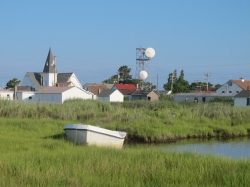
A new season, a new filing category.
Travelers leave home in many vehicles, via many routes. Some cover thousands of miles; others move only from one easy chair to another, while turning the pages of a good book.
Late in August I traveled both back in time—to 1962—and looped across America with author John Steinbeck, simply by picking up a paperback copy of Travels With Charley. Though written more than fifty years ago, this classic travel memoir of a man and his poodle, hit the spot more than once with the famed author’s observations about place and journeys. In particular, the following passage, one that comes about middle-in his book, about the time he makes it into the flatlands of the Midwest, resonated especially well with one of my own getaways this summer.
Steinbeck, reflecting on the decades of change he has witnessed, writes:
“It seemed to me that regional speech is in the process of disappearing, not gone but going. Forty years of radio and twenty years of television must have this impact. Communications must destroy localness, by a slow, inevitable process….Just as our bread, mixes and baked, packaged and sold without benefit of accident or human frailty, is uniformly good and uniformly tasteless, so will our speech become one speech….I who love words and the endless possibility of words am saddened by this inevitability. For with local accent will disappear local tempo. The idioms, the figures of speech that make language rich and full of the poetry of place and time must go….no region can hold out for long against the highway, the high-tension line, and the national television.”
In July I took a three-day weekend and a ferry to travel to a part of Virginia long purported to preserve not only a kind of “regional speech” but also a “local tempo” distinctly its own.
Tangier Island, in the middle of the Chesapeake Bay, still reachable only by boat or airplane, but perhaps even more noteworthy in 2015, still incapable of delivering reliable wi-fi or cell phone service, must feel for many visitors like a true ‘Throwback Thursday.’ With only two overnight options listed on most websites, three restaurants, one museum and far fewer gift shops than a Caribbean cruise stop, Tangier does not appeal to all the hundreds of sight-seers who spill out of the two daily warm-weather ferry runs—one from the Maryland shore, one from Virginia’s mainland.
These days most visitors come for lunch and a golf-cart rental, plus the pleasure of a boat ride over the Bay. Tangier may not have succumbed to the lure of the highways—the few cars on the two-mile long island get there by barge. But the influx of tourists wanting ice-cream cones, crab cakes and photo ops have made inroads on the island economy just as restrictions on the Bay’s crab fisheries and a creeping sea rise have affected its centuries-long tradition of isolated self-sufficiency.
All of which confirms Steinbeck’s sorrows when observing how local accents and flavors can meld into a sameness. But while I was only on the island for a tourist’s weekend, despite staying overnight and longer than most, several island distinctions were still visible nonetheless. For example:
Painted, gearless bicycles. The island is overall flat, with just a few charming bridges rising briefly to carry legs and wheeled vehicles up and over the “guts”—the shallow waterways or ditches, and marshes that separate the island’s main ridges. I rented a bicycle for a couple hours and grinned like an eight-year-old to remember brakes that kick in when you pedal backwards.
Patriotism. Visible in the profusion of flags. Even to the point of planted shells.
Picket fences. White. Iconic. And everywhere.
Cemeteries. Like any geographic location so close to its water table, these were often raised, and true to the remote nature of an island, engraved repeatedly with the same surnames, more testimony to the closeness of family, present and past.
Boats and birds. Islanders may be used to egrets in their front yards, but in-landers are not. The showy white marsh dancers and the darting ocean skimmers will be as familiar on Tangier as my own backyard squirrels and blue jays. The boats and their motors that putt-putt up close and whine away in the distances, might as well be God-given creatures, too, given how Tangier families have cultivated and depended on the water since settling there in the late 1600s.
A historical placard at the Tangier Island History Museum commemorating the lodging at Hilda Crockett’s Chesapeake House attempts to sum up what visitors should remember about Tangier. Credited to Sonny Forbes, and published about the same time as Steinbeck’s Travels, it reads:
To The Stranger Who Walks Our Shores
Step not lightly upon these shores nor cast lighthearted gazes upon our isle…take not a dim view of our dwellings nor laugh at our narrow roads…do not misunderstand our language nor make joke of our native tongue…do not mock our walk or look down upon our quaint ways…for upon these shores have walked men of God, made of fibre woven close for age…and inside these dwellings laughter and love have flowed to make mansions of our homes…our language is that of times past and ages still unknown and our native tongue speaks with truth, understanding and compassion…our walk is that of pride and labor—bent somewhat from our toil but never from shame…our quaint ways may be misunderstood as slow but time is abundant here and wish it not away…and fear not our streets, as narrow they are, for they are roads of welcome to strangers, highways to let all visitors come into our lives, and exit for those who misunderstand us, or mistrust us or wish not our love.
Getting My Ducks in a Row
file under WHITE, the color of a Staples receipt
I started entering data into Excel charts this weekend—the colored column headings are my personal, homemade versions of Turbotax questions. Which I have never seen. I use an accounting firm for my annual IRS tax filings. I despair just thinking about reading the government’s fine print on this topic. Or about what changes from year to year.
I’m a classic shoebox record keeper. Which means every year I devote long weekend hours converting paper receipts and invoices to digital data just so I can give the good folks at Hostetler Stott some organized totals.
I didn’t work at the task too diligently this weekend.
I joined friends on Friday night for a meal on the Corner. I slept in both mornings. I made curried sweet potato soup. I used a leaf blower on my flower beds. I swam laps for 30 minutes. I watched a movie.
I have yet to tackle medical expenses and charitable donations. I have many columns still to fill in.
But I am getting my proverbial ducks in a row.
In addition to catching a few in the act last week out near the Boar’s Head Inn.
12 Looks at 2014

file under ALL THE COLORS, because they’re all there…
Some people’s New Year’s resolutions are to exercise more. Sure. I’ll try to do that. But I really want to make a firm commitment in 2015 to post more regularly.
Sundays are the goal. ‘Nuff said.
Here’s today’s: a look back at 2014, through colorful photos.
If the equation still holds, it’s worth 12,000 words, right?
The Colors of Summer – Part One

file under red, (as in red, white and blue, of course)
Labor Day Weekend, wedged as it is between the end of August and the start of what we know as “the school year,” begs for reflection on the preceding weeks. Teachers ask for “What I Did On My Summer Vacation” essays, and photos that we were too busy taking to post while traveling creep slowly back onto social media platforms — or if you’re old-school, into photo albums.
With that in mind, and before anxiously checking out September like the last of the yellow jackets, let’s flip the calendar back a page or two and remember mid-summer again:
July’s reds were best captured for me in the wineberries, or wild raspberries, I picked from friends’ property west of town, a lush green, pine and oak covered place where just outside the margins of their grassy lawn, shoulder-high green and prickly red canes reach upward and fall back to the ground in sweeping arches. Rubus phoenicolasius, an Asian version of the raspberry, was introduced onto the North American continent in the late 19th century. Now considered invasive in Virginia and several neighboring states, these bright berry bushes thrive under the shade of tall leafy trees; the proliferation of canes here allows Camille to pick apron- and bucket-full loads of the tangy berries to cook into pies and more.
For the past few years I have begged to be let in on the action when the seeded, almost crunchy fruits are ready. When John and Jenny let me know mid-July that the berries were in but that “bears had gotten most of them” already, I hurried out to see for myself.
“Most of them” must only apply when you’re used to picking millions.
I found plenty remaining to satisfy my palate and easily filled a Ziploc gallon bag, more than enough for me to mark the season.
Jeanne Goes to the Big City
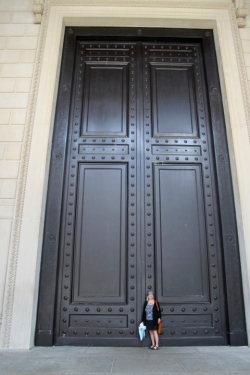
file under blues, since that rhymes with news, as in the Newseum, 555 Pennsylvania Avenue, NW
By the first week of July, summer is well underway: travel plans have been sketched out, tickets reserved, and new suitcases purchased–some folks have already packed and unpacked.
Me, too. A couple times.
A nephew’s high school graduation on a Wednesday morning in mid-June, in downtown D.C., followed in short order by a cousin’s daughter’s wedding in central Pennsylvania, seemed to call for a week away from the office. I prefer a relaxing pace for travel, as well as a chance to mow the grass before leaving for five days.
My personal reward was a solo trip into D.C. on a day in between celebrations.
Things in big cities don’t always have to be on a larger scale than in the “small town” I live in, but they often are.
Consider the 40-foot, bronze front doors at the National Archives. New York architect John Russell Pope designed the giant Corinthian columns and the main entrance to speak to the immense importance of the documents stored within. Pope created his building design in 1930; Claes Oldenburg and Coosje van Bruggen’s Typewriter Eraser X, in the nearby National Gallery of Art’s sculpture garden was constructed in 1999. I have no idea if erasers were needed for the Declaration of Independence or the Constitution, but typewriters didn’t come along for almost another 100 years.
I did know, however, from my first glimpse of the the star-studded carpet at DAR Constitution Hall and Metro escalators that I was out of town. Big time. If I hadn’t, the suspended screen I saw in the lobby of the Newseum the next day would have confirmed it.
Charlottesville’s latest census stats peg us at 44,000-plus, but no one is quite sure if that’s when the 23,464 UVA students are in town, or out of town. Albemarle County’s urban ring adds another 103,000 de facto Cville residents, but all of that pales next to the DC/NOVA/Maryland metropolitan area with more than nine million heads counted as of the 2012 Census estimate.
Patrick’s senior class at George C. Marshall High School in Fairfax County included 418 of them.
A Waste of Time and Energy?

file under deep, dark rich shades of brown
I heard that someone recently queried their Facebook friends on a Saturday afternoon: “Did you do something fun today, or do you own a house?”
The implication, of course, is that if you own a house, the first warm weekends of spring are inevitably spent transitioning your abode from one season to the next.
I try to strike a balance most weekends, but ’tis true that with two consecutive exceptionally fine sunny weekends in Charlottesville, I have taken my House & Garden to-do lists most seriously.
One of my proudest accomplishments would have to be digging out the bottom fifteen inches or so of the compost bin, and returning all those apple peels, egg shells, coffee grounds, cantaloupe rinds, and celery ends to three small garden beds of shovel-turned dirt that I hope will soon be producing beets, pole beans, cucumbers and peppers.
Not waste any more. And hardly a wasted weekend.
Hope you enjoyed yours, too!
P.S. Who can spot the earthworm?!
Living, loving and leaving
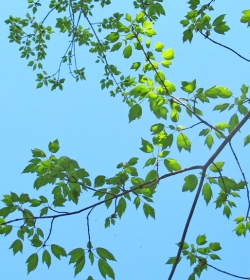
file under…? Three guesses, and the first two don’t count!
I have been having a love affair with leaves this month.
I watch intently for those first little bitty tinges of red, the blush before trees reveal their intentions so completely, so publicly. My anticipation mounts upon seeing at a distance the hint in the tree lines of that squeaky new green that intoxicates, teases, and promises even more excitement. And finally, finally, after months of stick grey verticals, I revel in their unfolding, happily, by the thousands and millions.
In full force, the maples spread a fluttery pattern against the sky. Dandelion leaves emerge overnight from nowhere and everywhere, reaching for the sun; falling short, they create their own. Oaks unfurl slowly, infant ear curls of pink and red.
The painted blue metal fingers of my rake uncover moist brown dirt as I scrape under azalea bushes. Leftovers of an earlier generation lie quietly in flattened, blackened layers after the commotion of autumn. Momentarily I am sober, reminded of the temporary nature of leaves and loves, of our own seasonal existences. And then, looking up, I cannot help but smile and begin to flirt again.
I giggle as seedpods do their helicopter twirl to the deck and driveway. I swoon during commutes on highways draped once more in green. And I relax at the end of the day, grateful for the return of shade and tree shadow.
Welcome back, leaves. Your absence certainly made my heart grow fonder.
Pandamonium

File under BLACK and WHITE, of course
My weekends lately have had a tinge of pandemonium about them.
Not in the Miltonian origins of the term but simply a Webster-like sense of “lots of commotion” or “a wild uproar.”
Charlottesville’s downtown block party—part of a contemporary celebration of Thomas Jefferson’s April 13 birthday called the Tom Tom Founders Festival—drew not only crowds, but large numbers of fire dancers, food trucks, entrepreneurs and musicians this past weekend.
Our fair city’s Saturday morning farmer’s market is in full swing again, drawing shoulder-to-shoulder throngs. This early in the season they come in search of bedding plants, pies, earrings, orchids, olive oil soap, coffee, tacos and friends. (Truth be told, all summer long our market is as much about friends as it is farmers.)
Next weekend, my daughter and I will be renting a commercial version of a monster truck to drive it over the river and through the woods to her grandmother’s house before said house goes on the market after 51 years in the family. Furniture and memorabilia distribution has a kind of pandemonium about it, too.
All these events offer productivity and social rewards despite their associated tumult. But I have decided my preferred pace involves what I’m calling the pandamonium that occurred when I took a trip through Giant Panda land last weekend at the National Zoo.
I missed most of the local, national and international excitement when little Bao Bao, (meaning “precious”) was born late in August. She made her public debut with zoo visitors in January.
But because Bao Bao only this month began to make her first forays into the outdoor portions of the Giant Panda habitat at her Washington D.C. home, crowds form quickly behind the friendly and well-informed guides on the Asia Trail. All are eager to see the 20-plus-pound toddler and her parents. If you go visiting anytime soon, however, don’t be disappointed if you don’t see Bao Bao. Like a lot of babies, she sleeps a lot, something like 20 hours a day.
Visitors of all ages and stripes are captivated by these furry, big-headed bumbling black and white bears who have become the internationally recognized symbol of endangered species and conservation efforts.
(Coca-Cola tries hard to make animated polar bears look equally loveable, but somehow in real life the arctic bears present as fearsome creatures, while the live, lumbering pandas still look like something to snuggle.)
The folks at our National Zoological Park (NZP) take panda preservation seriously though—they are among the rarest of our land animals— with as few as 1,600 giant pandas left living in the mountain forests of their native China, and only 300 some living in zoos worldwide.
This gives poignant meaning, in my mind, to the promise of Papa Bear Tian Tian, whose name means “more and more.” A zoologist’s wishful thinking times two. Tian Tian’s and his designated mate’s bi-annual procreational abilities have been likened to birth watches among royalty or celebrity types for the media attention they generate.
(Bao Bao’s mother is called Mei Xiang, a name that supposedly translates as “beautiful fragrance” but given that pandas are, after all, bears, I’m guessing not so much.)
Through educational videos, prolific signage, panda cams, web pages, Twitter accounts and Facebook pages, the NZP capitalizes on the craze for all things panda. With the outpouring of public support, the zoo aims to improve poor panda demographics. Bao Bao will be returned to her native China at age four under agreements signed in 2011 as part of the Giant Panda Cooperative Research and Breeding Agreement between the Zoo and the China Wildlife Conservation Association.
The David M. Rubenstein Family Giant Panda Habitat has been enlarged recently, according to the NZP web pages, with an indoor portion that now contains “four exhibit rooms, four dens, increased visitor viewing space, new informational exhibits, additional space for keepers, and a humidified storage building for fresh bamboo, complete with windows for visitors to see just how much bamboo the pandas consume in a day.”
Long lines and crowds being what they are, I was able to see how much bamboo an adult female can consume in something less than 10 minutes.
Other panda stats and facts suggest their “bold coloring provides effective camouflage into their shade-dappled snowy and rocky surroundings” and that their heads are extra large in part to allow for the “large molar teeth and strong jaw muscles” they need for crushing tough bamboo, which makes up 99 percent of their diet in the wild.
“In zoos, giant pandas eat bamboo, sugar cane, rice gruel, a special high-fiber biscuit, carrots, apples, and sweet potatoes,” according to the NZP.
Probably not Panda Popcorn, though.
I didn’t try it either.
No more foolin’
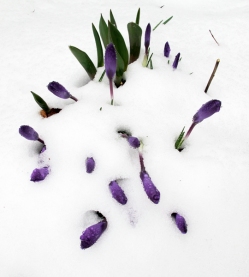
file under WHITE for snow storms and the bright dresses of Bahian women
April 1 and only today did it feel safe to put away the snow shovel.
December 17 I was still wearing the flip-flops and short skirts from my Semester in Summertime. Winter has been a long time ending this year. Seeing good friends and neighbors, though, softened my abrupt transition from ship to shore, from summer to winter, each visit a bright holiday ornament for the Christmas tree I didn’t put up.
Plus a steady selection of familiar faces from the ship—my constant companions for nigh on four months—appeared in living rooms, restaurants and all over the Internetworks in the weeks after the M.V. Explorer docked in Ft. Lauderdale.
New Year’s to St. Patrick’s Day was also interspersed with an abundance of family interludes: a mother-daughter trip to Ohio to see a mother-Grandmother; a rainy ride to Pennsylvania with a sister-in-law for a bridal shower of a cousin’s daughter. Nephews, brothers, daughters and more cousins all received hugs and overdue telephone calls.
I threw a Solstice party and a potluck dinner at my house. Trekked out in the country for a Saturday morning hike and later a Mardi Gras party. I bought tickets to a book festival and a new temporary membership to a gym. (With a salt-water pool! Ha!) I’ve been to lunches and dinners and brunches and movies with friends. Even an outdoor winter wedding where the groomsmen all wore kilts.
The need to stay in motion is real after four months at sea. A counterbalance to the Monday-through-Friday, nine-to-five, sit-at-a-desk routines that wear poorly on most of us, much less a traveler. Still, through it all—December, January, February, March—I couldn’t write.
Since leaving Buenos Aires in late November I haven’t written much of anything. Perhaps because by then I was cup-overfloweth-memory-cards full with new sights, new ports, new thoughts and new currencies. I didn’t stop taking pictures, or stop trying to absorb where I was, I just couldn’t write about it anymore. Besides, Natalie joined my journey in Argentina, and my blog-style sharing seemed less critical when I had a member of the family nearby to swap stories with each evening.
I still marveled at the Carnival costume constructions in progress that we saw in Rio and took silly, maybe even sacrilegious selfies in front of Christ the Redeemer. I delighted in the colored ribbons and brilliantly white dresses worn for dia da consciência negra, the Bahia Brazilian holiday commemorating the region’s African heritage on November 20. I relished my day-before-Thanksgiving swim at the beaches near Salvador. But with a final port and winter temperatures looming, I was beginning to enter a state of mental dormancy.
But Cuba? Why did I get writer’s block in Cuba of all places?
This week, after two consecutive days in the 70s and April dates on the calendar, I am more than just home again. The weekly snowstorms have subsided. Colors are returning to the black-and-white and grey-and-brown Virginia landscapes. I have seen purple crocus, yellow daffodils and red maple buds. I threw a brightly flowered cover over the picnic table out back.
It’s time to emerge again. Words and all.




